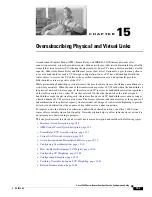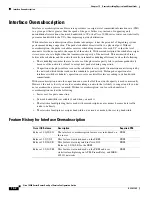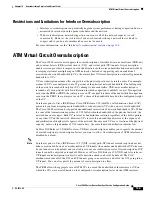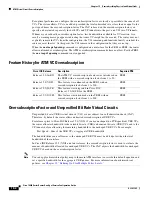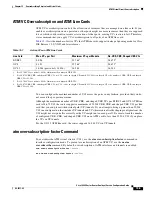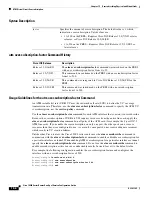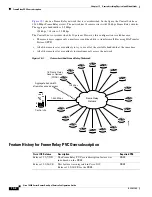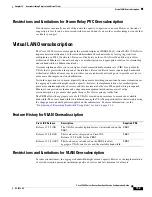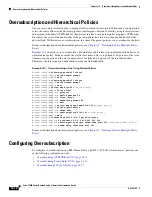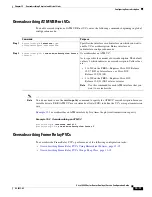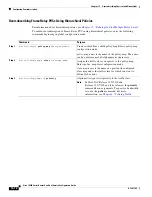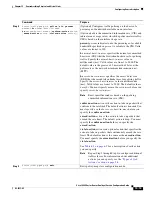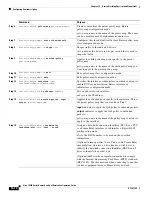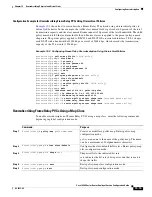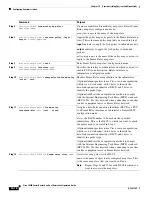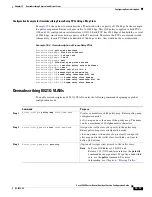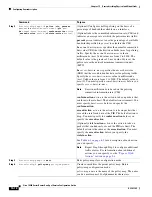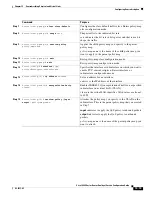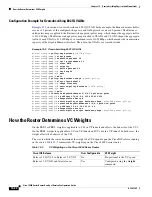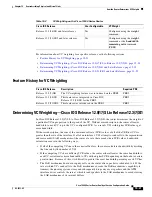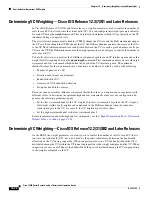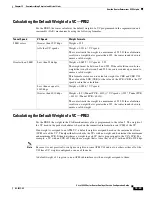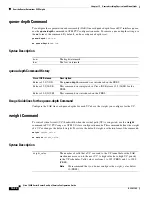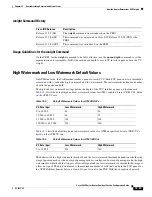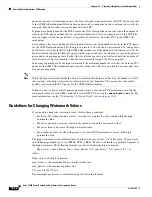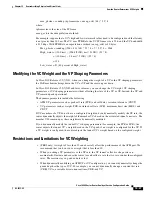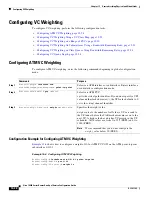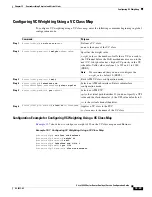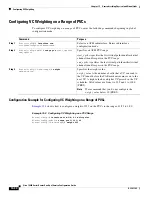
15-15
Cisco 10000 Series Router Quality of Service Configuration Guide
OL-7433-09
Chapter 15 Oversubscribing Physical and Virtual Links
Configuring Oversubscription
Configuration Example for Oversubscribing Frame Relay PVCs Using Hierarchical Policies
Example 15-3
shows how to oversubscribe a Frame Relay T1 network using a hierarchical policy to
define QoS behavior. In the example, the traffic class named Gold is policed at 60 percent of the total
transmission capacity and the class named Bronze requests 30 percent of the total bandwidth. The child
policy named dlci50 that contains the Gold and Bronze classes is applied to the parent policy named
shape-rate. The parent policy applied to DLCI 50 and DLCI 100 on serial subinterface 5/0/0.1 shapes
each DLCI with a bandwidth of 1024 kbps or a total of 2048 kbps, which exceeds the transmission
capacity of the T1 network (1536 kbps).
Example 15-3 Configuring Frame Relay Oversubscription Using Hierarchical Policies
Router(config)#
policy-map dlci50
[child policy]
Router(config-pmap)#
class Gold
Router(config-pmap-c)#
priority
Router(config-pmap-c)#
police percent 60
Router(config-pmap-c)#
class Bronze
Router(config-pmap-c)#
bandwidth percent 30
Router(config-pmap-c)#
exit
Router(config-pmap)#
exit
Router(config)#
policy-map shape-rate
[parent policy]
Router(config-pmap)#
class class-default
Router(config-pmap-c)#
shape 1024
Router(config-pmap-c)#
service-policy dlci50
[child policy]
Router(config-pmap-c)#
exit
Router(config-pmap)#
exit
Router(config)#
interface serial 5/0/0.1 point-to-point
Router(config-subif)#
ip address 10.1.0.2 255.255.255.252
Router(config-subif)#
frame-relay interface-dlci 50
Router(config-if-dlci)#
service-policy output shape-rate
[attaches parent policy]
Router(config-if-dlci)#
frame-relay interface-dlci 100
Router(config-if-dlci)#
service-policy output shape-rate
[attaches parent policy]
Oversubscribing Frame Relay PVCs Using a Map Class
To enable oversubscription of Frame Relay PVCs using a map class, enter the following commands
beginning in global configuration mode:
Command
Purpose
Step 1
Router(config)#
policy-map
policy-map-name
Creates or modifies a policy map. Enters policy-map
configuration mode.
policy-map-name
is the name of the policy map. The name
can be a maximum of 40 alphanumeric characters.
Step 2
Router(config-pmap)#
class
class-default
Configures the class-default traffic class. Enters policy-map
class configuration mode.
Step 3
Router(config-pmap-c)#
shape
rate
Shapes traffic to the indicated bit rate.
rate
indicates the bit rate in bits per second that is used to
shape the traffic.
Step 4
Router(config-pmap-c)#
exit
Exits policy-map class configuration mode.
Step 5
Router(config-pmap)#
exit
Exits policy-map configuration mode.

